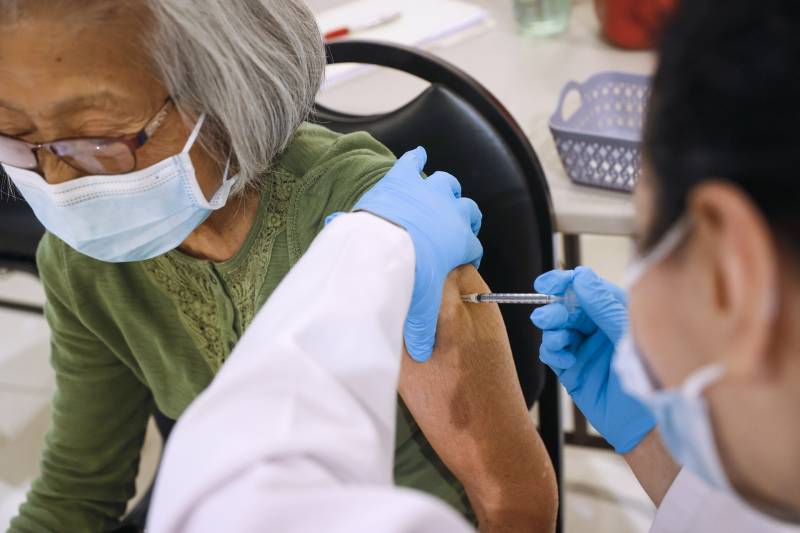At a sewage plant in Redwood City, levels are spiking, but declining in San Francisco’s Oceanside neighborhood and falling dramatically at similar facilities in Sunnyvale and Palo Alto.
Los Angeles is seeing a slow rise, while virus levels started to slowly fall off in Sacramento recently.
Given the current numbers, Chin-Hong does recommend taking additional precautions. He suggested people who are immunocompromised and those over the age of 65 consider masking indoors, given their higher susceptibility to severe illness.
Everyone else may want to weigh the consequences of falling ill at this time. Can you miss work? Do you have a special occasion on the books that you’d have to miss if you were isolated for five days, which public health officials still recommend people do after a positive test? Then it may be a good time to err on the safe side if you don’t want to end up at home alone. You could carry your well-fitting N95 mask in case you find yourself in a crowded indoor space.
The public will have the opportunity to fortify immunity soon. A new booster shot will likely be available in late September, designed to target the variants in wide circulation now.
Feeling like a pin cushion? There’s good news for those suffering from booster fatigue. Scientists are working on a universal vaccine, which, in theory, would allow one-stop shopping. Unlike current vaccines, which offer protection against one or several strains of a disease, universal vaccines are designed to teach the immune system to defend against all versions of a pathogen — even versions that don’t exist yet. This is possible by targeting an element of the pathogen that is the same across all strains and types.
“That is the holy grail,” said Chin-Hong. “I think we will probably get something in the next two-to-three years. They are also working on that for influenza.”
In the meantime, he says, we could see a combination vaccine that provides protection for COVID-19 and influenza as early as next year.
